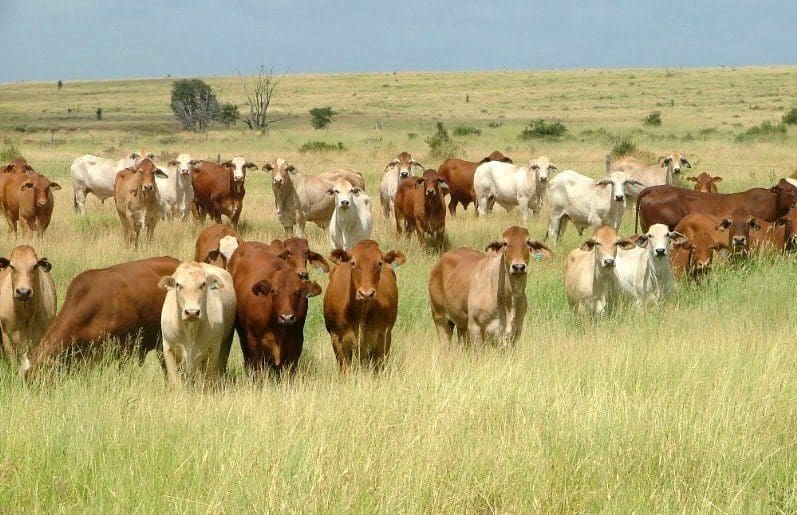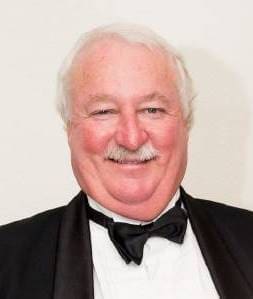
Typical developed buffel grass finishing/breeding country in Central Queensland
DESPITE strong demand, listings of significant cattle holdings in Central Queensland are hard to find, with experts not expecting the situation to improve in 2017.
While astute investors are aware of the region’s relatively reliable rainfall, highly-fertile country with improved pastures and superior weightgain finishing performance, properties of any scale are just not available in large numbers.
Elders Central Queensland rural property specialist Virgil Kenny, covering the ‘dress circle buffel grass’ areas around Rockhampton, Springsure, Moura, Theodore and Emerald, said there were few beef cattle property listings available in the early part of this year, coming off a very strong finish in 2016.

Virgil Kenny
“Limited properties were being offered, but you could feel the market starting to move. Strength and competition were reflected by the number of people actively looking and purchasing properties on the back of a very strong cattle market, good winter rain and reduced interest rates,” he said.
Mr Kenny said these factors are giving graziers the confidence to step out and purchase additional land, and quality country was now ‘ringing the bell’.
“Central Queensland is one of the most reliable areas for beef production, cattle markets and seasonal conditions.
“An inch of rain puts these fellas back in business because the (buffel grass) country rebounds quickly. Other areas (i.e. Mitchell/Flinders native grass country) get an inch of rain and are still looking to the skies for another three or four inches. We could be in the middle of a drought and still turn off fat bullocks.”
Gary Bishop from Moura-based Hourn & Bishop said plenty of people are chasing fully stocked, breeder and fattening properties in his area.
“Central Queensland is one of the most reliable areas in terms of beef production. People find it hard to understand, but the region produces kilos of beef quickly and a good income on an annual basis. In terms of the property market, it is one of the strongest in Australia,” he said
And the prices paid on a beast area and per hectare basis reflect it. A sample of some of Central Queensland’s more recent standout sales include:
2015
- 5480ha Rangeview, regarded as one of best cattle enterprises in the renowned Bauhinia Downs District, sold for $9.3m or $1697/ha in Dec 2015.
- Bauhinia district cattle properties 3647ha Mount Aldis sold for $7m or $1919/ha and 4000ha Sandra Downs sold for $6.7m or $1675/ha.
2016
- 3934ha Bauhinia Downs property Arcoona sold for a district record of $12.85m or $3266/ha.
- 69,000ha Tumbar, near Jericho, sold last August for $67.5m. The purchase included about 8000 quality Angus cattle, worth about $10m, valuing the mixed breeding/finishing country at about $860/ha bare.
2017
- Baralaba district properties – the 1157ha Hardwood sold for $3m or $2593/ha; the 822ha Clayfield homestead block sold for $2.25m or $2737/ha and; the 648ha Softwood block sold for $2.175m or $3356/ha.
- Bauhinia Downs properties – the 3200ha Old Delargum sold for $9.4 million or $2931/ha bare and the 4080ha Murraway sold for $10.25m or $2457/ha.
- Dingo property 4242ha Mayfield sold for more than $8m, equating to around $2000/ha.
- While marketed more as a breeder block than a finishing property, 13,100ha Galloway Plains near Calliope made the equivalent of about $745/ha bare at auction last week (see earlier report).
But Mr Bishop disputed suggestions that the Central Queensland market for quality finishing country may have peaked.
“Compared to the ‘benchmark’ 2007-08 price peak period, there is more ‘guts’ in the present market”
“It may have done in western areas, but there are a lot of people chasing properties in Central Queensland, so who knows if it will keep rising? It certainly won’t drop, in my opinion,” he said.
Compared to the ‘benchmark’ 2007-08 price peak period, Mr Bishop said there were more ‘guts’ in the present market with strong cattle prices, declining numbers and low interest rates.
“Back then the market was still rising, when cattle prices were declining. This current market has more surety. Clermont, Springsure, Capella and Middlemount districts are all making good money now – around $2000/ha* (800/acre*) bare. Country around Moura is comfortably making $2500/ha* plus. The better class brigalow country is in short supply.”
(*Editor’s note: An error occurred in conversion of imperial:metric numbers when this article first appeared. The price per acre quoted in Mr Bishop’s original comment was divided to produce $/ha, rather than multiplied, as it should have been. The correct figures now appear in this revised version. While $/acre are still widely used in industry parlance about land value, Beef Central is required, by law, to convert any imperial measurements to metric. In all cases in our property reporting, metric $/ha appears first, sometimes followed by $/acre, in brackets. Apologies for any embarrassment or confusion caused by the mistake.)
Virgil Kenny said Central Queensland was experiencing similar prices to the peaks of 2007-08, with levels at $3000 – $4500 beast area in some areas.
“Ten years ago, the country around Moura, Bauhinia, Biloela and the back-end of Theodore was making good money. Those strong prices are now spreading to the Central Highlands around Springsure, Orion and Gindie towards Middlemount. Cattle properties are making around $2000/ha which is something that hasn’t really happened before.”
What’s in store for the remainder of the year?
Mr Kenny is confident 2017 will see a strong market continue for cattle properties.
“Currently there is demand for properties of all shapes, sizes and descriptions. There is a lot of strength in the market supported by low interest rates. That makes a difference. It all helps to keep the market buoyant and stable.”
Rockhampton-based Herron Todd White valuer Michael Chaplain agrees.
“There is plenty of market confidence and competition for larger scale breeder properties in Central Queensland which is currently a thinly traded market segment. There are very few 2000 head breeder blocks available.”
Mr Chaplain said all things being equal, if cattle prices maintain their present levels and there’s no dramatic increase in interest rates, the beef property market will keep on a similar trajectory.
“Once the word gets out about these stronger sales, older landowners and those struggling with debt issues in particular may see it as a good time to exit the industry. So potentially, we could see more of these types of assets coming to the market,” he said.
However, Gary Bishop predicts the quality of the listings in Central Queensland will ease.
“When that happens, people will assume the property market has dropped off, but it will be more to do with the quality of the listings being offered. Any of the good ones will still sell well, but they will be fewer in number, which may give people the impression that the Central Queensland market has gone off the boil.”
Listings to watch
One large listing to watch in the coming weeks is an aggregation of three showcase Central Queensland buffel grass finishing properties developed to suit large-scale livestock production.
The 41,500ha Iffley, Deverill and Twenty Mile, located about 40km south-east of Moranbah and 240km north-west of Rockhampton, are being offered by expressions of interest by CBRE. It’s been suggested the aggregation could be worth $60m. Expressions of interest close 15 June.
